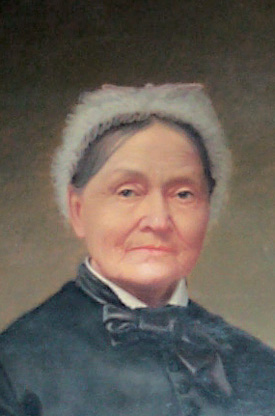Wherever We May Go (1830)
While all nursery room graduates know that Mary had a lamb, what proves elusive is the fact that the lamb did not only exist in the confines of a nursery rhyme. Immortality arrived when Mary Elizabeth Sawyer’s beloved pet followed her to school.
The lady with the lamb was born in 1806 on a farm in Sterling, Massachusetts. At age nine, while Mary helped her father, Thomas, with chores, they discovered an abandoned, sickly lamb. Although Mr. Sawyer did not hold out much hope for the animal’s survival, he allowed his daughter to bring it into their home where she nursed it back to health. As an adult, Mary wrote, “In the morning, much to my girlish delight, it soon learned to drink milk and from the time it could walk about, it would follow me anywhere.” 
One morning, as Mary and her brother, Nathaniel, walked to the one-room Redstone School, their lamb trailed behind. Nathaniel thought it would be a great prank to smuggle the animal into their classroom; once inside, Mary hid the pet with a shawl. The gig was up when their teacher, Rebecca “Polly” Kimball, called on Mary to recite her lesson in the front of the class. When the beribboned lamb hurried to join her, the teacher ordered her pupil to tether it to the shed in the yard. John Roulstone Jr., the twelve-year-old nephew of the Reverend Lemuel Capen, who was visiting Sterling and had been in the classroom, composed a light-hearted poem about the event that he gifted to Mary.
The incident would have ended there had it not been for Sarah Josepha Hale, the magazine editor who had convinced President Abraham Lincoln to institute a national day of Thanksgiving as a bond between the North and the South. In her book, Poems for Our Children, she included Roulstone’s original verse and included her own stanzas at the end. Her version served as a religious allegory: Mary as the mother of God, the lamb as Jesus, the moral a tale of unconditional love.
Henry Ford–inventor of the Model T–was so taken by the poem that he purchased the 1780 Redstone School House and relocated it on his Sudbury, Massachusetts, property, located on the grounds of the poet Henry Longfellow’s former Wayside Inn. When Thomas Edison invented the phonograph, the first to record sound, he shouted into his machine the words of the rhyme. In her later years, Mrs. Columbus Tyler, (Mary’s married name), used the poem’s popularity to raise funds to restore the historic Old South Meeting House in Boston. Many decades before, her mother, Elizabeth, had knit her a pair of socks from her lamb’s wool and glued individual strands of the yarn onto cards with the message, “Knitted wool from the first fleece of Mary’s Little Lamb.” At the bottom, she affixed her signature; Ford purchased several. Mary passed away in 1889; her grave is in Mount Auburn Cemetery in Boston.
The dark side of the poem was a series of tragic events: Mary’s lamb, after birthing three ewes of her own, followed Mary into a barn where one of the Sawyer’s cows gored her to death. John passed away from tuberculosis during his freshman year at Harvard; arsonists destroyed Mary’s historic home in 2007.
To commemorate their famous daughter, Sterling residents erected a two-foot-tall statue of a life-size lamb in the town center. The plaque on the monument’s base bears the famous rhyme along with the name of its author, John Roulstone.
A schoolhouse prank, a famous inventor, and a millionaire automobile mogul ensured that a nursery rhyme will follow us—wherever we may go.


